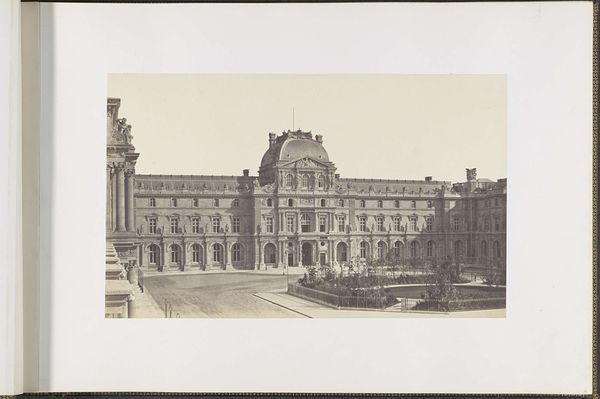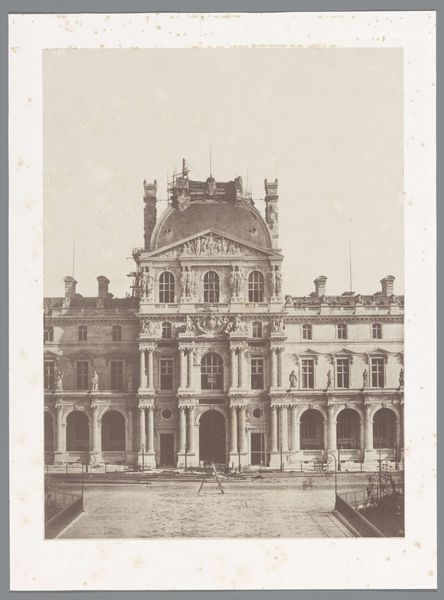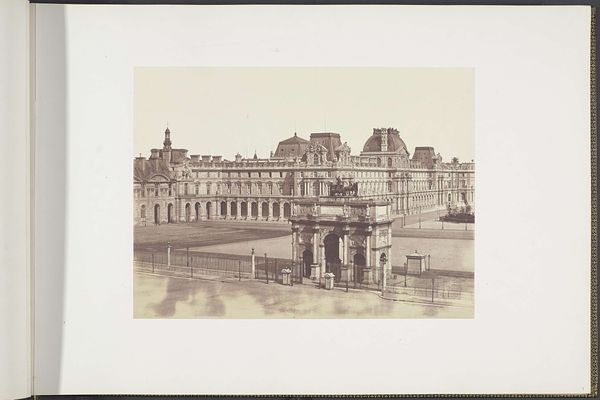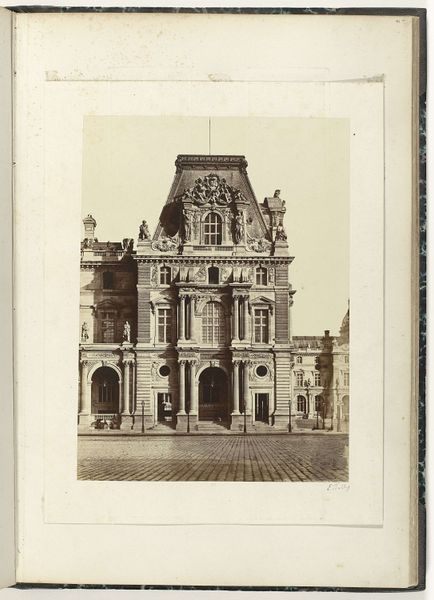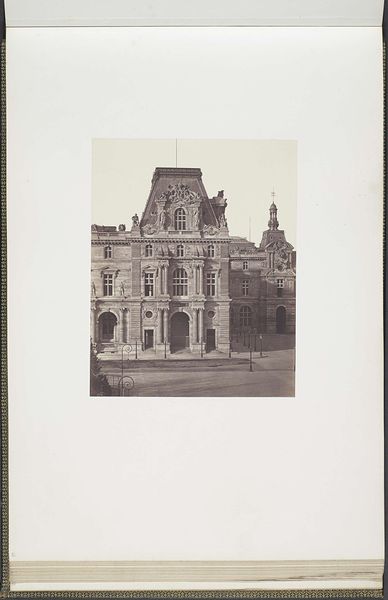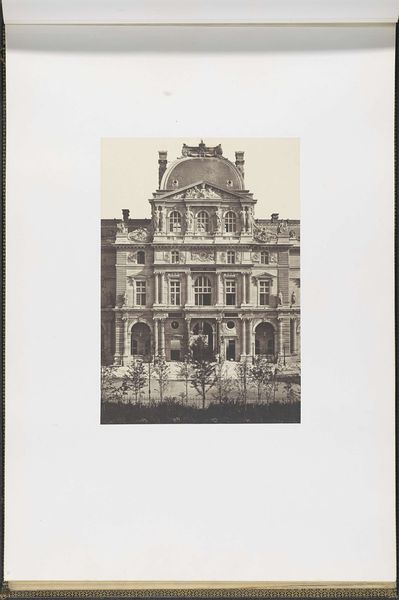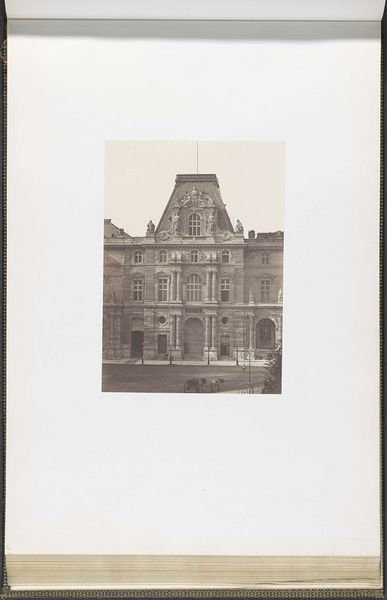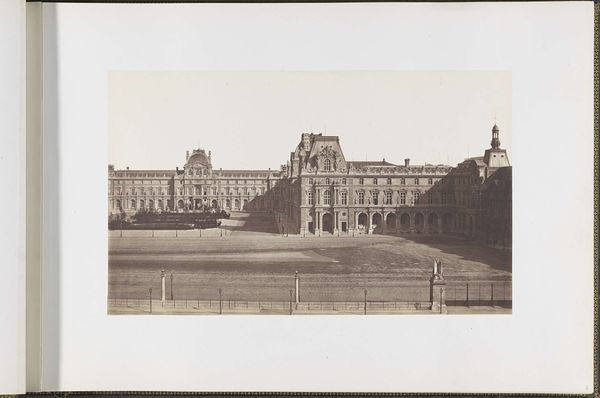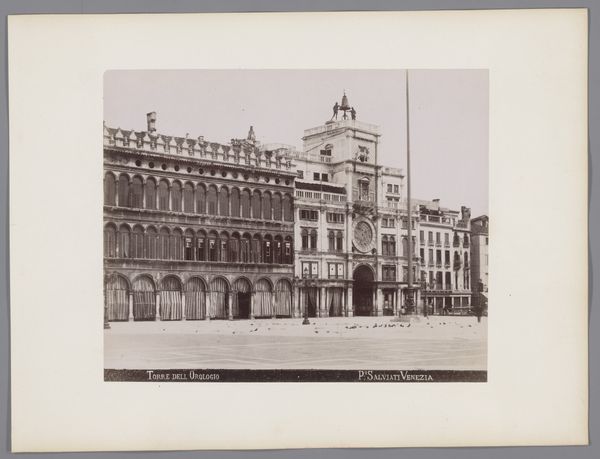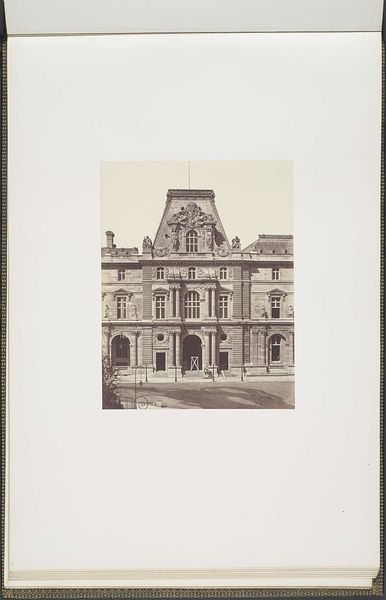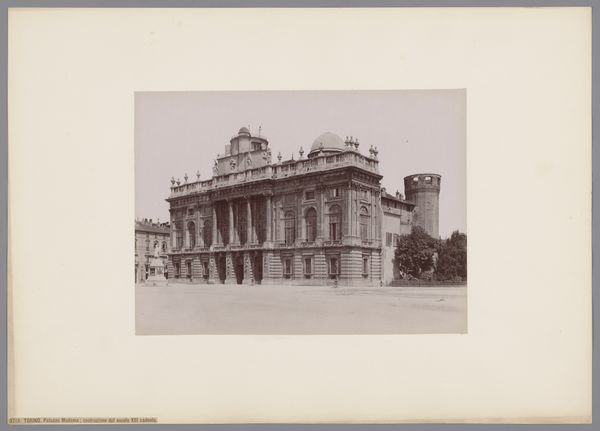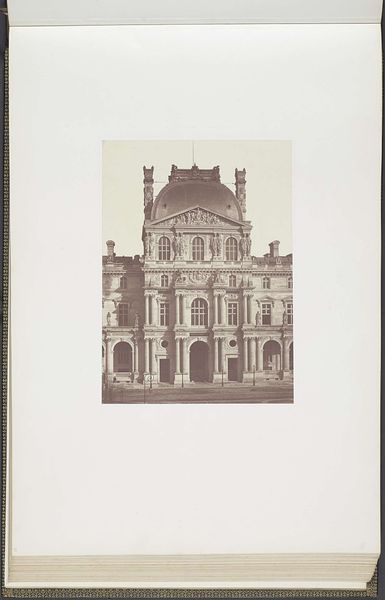
photography, gelatin-silver-print
#
landscape
#
photography
#
gelatin-silver-print
#
cityscape
#
realism
#
building
Dimensions: height 378 mm, width 556 mm
Copyright: Rijks Museum: Open Domain
Curator: This gelatin silver print by Édouard Baldus, dating from about 1855 to 1857, captures the Pavillon Turgot of the Palais du Louvre with remarkable clarity. The photograph is part of the Rijksmuseum collection. Editor: It strikes me as strangely still. A grand building, captured in a muted tone that almost feels ghostly, even though it’s obviously intended as a realistic depiction. Curator: Realism was, indeed, a driving force in photography at the time. Baldus aimed to document the Louvre with an almost architectural precision. Note the linear perspective, the meticulous detail of the façade, the proportional relationship of the different blocks. The photographic technology, even then, provided for a faithful transcription. Editor: And yet, the sepia tone gives it an aged, almost romantic quality. It’s interesting how the medium itself can influence our perception, transcending pure documentation. What was Baldus trying to achieve with his cityscapes? Curator: Beyond a literal record, Baldus' photographs served a socio-political function. The rebuilding of the Louvre was part of a larger project by Napoleon III to modernize Paris. These photographs were visual testaments to that imperial ambition. He presented Paris as a symbol of power and progress. Editor: I see. It is hard to imagine the Louvre here outside this historical trajectory and political staging, when we so readily visit and casually observe it. Also, how can we ignore the very structure and organization inherent to the photograph itself. I appreciate that we have an asymmetrical placement of the building within the frame. Its balance with negative space invites one to contemplate the relations of this mass with its surrounding environment. Curator: Exactly. Baldus’ organizational acumen created a carefully balanced composition between objectivity and artistry, documenting Parisian urbanism of the Second Empire and producing artistic and culturally engaged imagery at once. Editor: Reflecting upon this photograph now, its true value lies, perhaps, in its nuanced combination of detailed structure and the feeling it evokes. Curator: I agree; in scrutinizing the details, both visually and historically, it offers a glimpse into a pivotal era of transformation of both city and technology.
Comments
No comments
Be the first to comment and join the conversation on the ultimate creative platform.
